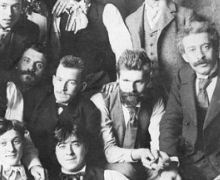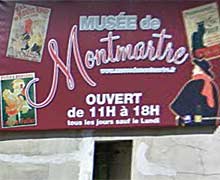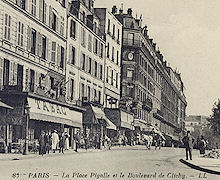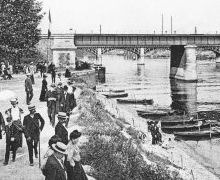
Vincent van Gogh took it upon himself to improve their financial situation with Theo's aid. The brothers had talked a lot with
Pissarro and the others an artists' association, an idea which Van Gogh developed. All te painters, including the succesful ones, would have to donate paintings of the same value to the association, so that all of them were assured of a fixed income.
Although Van Gogh later said that the lack of unity between artsts was one of the reasons for him turning his back on the city.
Also a reason was that models didn't want to pose for him, he was forbidden to sit and work in the street and because of his volatile disposition this repeatedly led to scenes, which upset him so much that he became completely unapproachable and by the end of it all he had more than enough of Paris.
Almost immediately after arriving in Arles, he began laying plans for a joint Impressionist exhibition in Marseille, and wrote to
Emile Bernard telling him about the advantages and drawbacks of the south of France. He also wrote to
Toulouse-Lautrec.
It was not long afterwards that Van Gogh rented the Yellow House with the intention of turning it into a studio for himself and another artist, preferably
Gauguin.
He hung it from top to bottom with his paintings, creating his own exhibition space.








